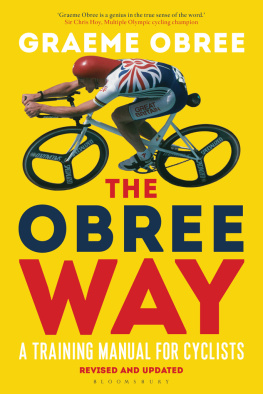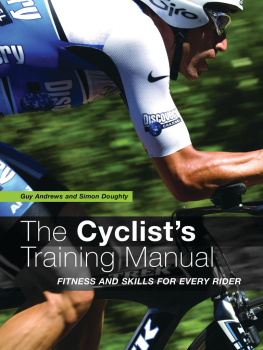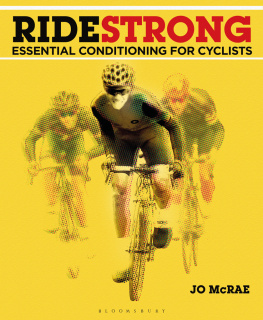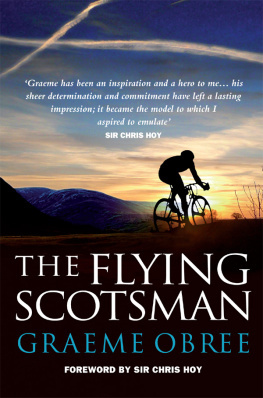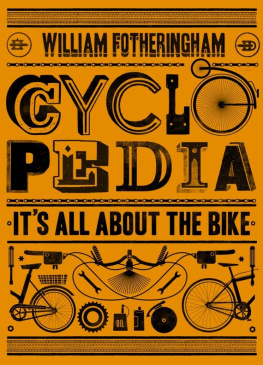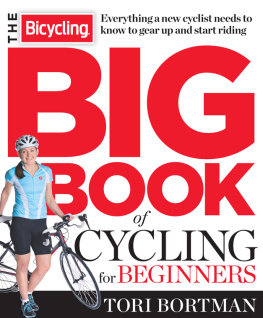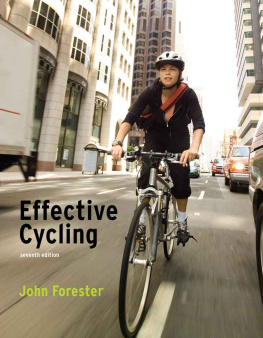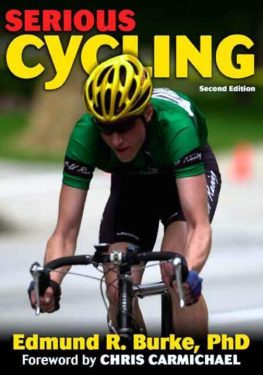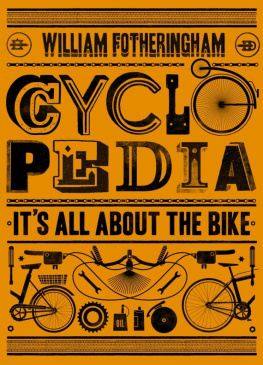
Bloomsbury Sport
An imprint of Bloomsbury Publishing Plc
| 50 Bedford Square | 1385 Broadway |
| London | New York |
| WC1B 3DP | NY 10018 |
| UK | USA |
www.bloomsbury.com
This electronic edition published in 2018 by Bloomsbury Publishing Plc
BLOOMSBURY and the Diana logo are trademarks of Bloomsbury Publishing Plc
First published in 2013
This second edition published in 2018
Text Graeme Obree, 2018
Graeme Obree has asserted his right under the Copyright, Designs and Patents Act, 1988, to be identified as the Author of this work.
All rights reserved.
You may not copy, distribute, transmit, reproduce or otherwise make available this publication (or any part of it) in any form, or by any means (including without limitation electronic, digital, optical, mechanical, photocopying, printing, recording or otherwise), without the prior written permission of the publisher. Any person who does any unauthorised act in relation to this publication may be liable to criminal prosecution and civil claims for damages.
No responsibility for loss caused to any individual or organization acting on or refraining from action as a result of the material in this publication can be accepted by Bloomsbury or the author.
ISBN: 978-1-4729-1065-3 (PB)
ISBN: 978-1-4729-4712-3 (eBook)
ISBN: 978-1-4729-4713-0 (ePDF)
To find out more about our authors and their books please visit www.bloomsbury.com where you will find extracts, author interviews and details of forthcoming events, and to be the first to hear about latest releases and special offers, sign up for our newsletter.
CONTENTS
FOREWORD
JOHN BEATTIE BROADCASTER AND FORMER SCOTLAND RUGBY INTERNATIONAL AND BRITISH AND IRISH LION
Growing up in Borneo as a small boy as the 1950s moved into the 1960s, my heroes were all Scottish. My father would play bagpipe music on an old record player, my brothers and I would march around the bare floorboards to it, and he would tell us of great Scottish deeds as we gazed out at the steaming jungle.
Our dad was from Govan, a young rubber planter, but he spoke of the inventions, the peacemakers, some war heroes and of course the sportsmen and women. There was Jim Clark the racing driver, Benny Lynch the boxer, lots of football players and later Bobby McGregor the swimmer.
Even at that early age I think I understood that it was uncommon for Scots to be the best in the world at their particular sport, but if they got there then they had made a special sacrifice and they were very special men and women.
All through my sporting career as a rugby player I think I accepted that I wasnt the best in the world. At times I wasnt the best in Scotland, but thats what drove me and my friends to compete and sometimes come up with the most unlikely victories.
There is something distinctly Scottish about finding a unique solution to a problem and using it to win something.
The rugby victories came about through Scottish advances in sporting theory. Jim Telfer was ahead of his time as a coach, and fitness guru David McLean had Scottish players on fitness regimes before any other country had really started to do the same. We were given our own set of weights, our own training programme and tested on treadmills until we fell over.
For me, that information was like gold as I had been on a 10-year journey of discovery in trying to find the knowledge by reading great books like those of Dr Danie Craven, the South African player and phoning men like Bill Dickinson, the first advisor to the captain in Scottish rugby, long before coaches were invented.
That has always been my fascination with sport: its a constant search for knowledge. Sport is for everybody, and each and all of us want that knowledge presented simply and effectively. And that brings me to Graeme Obree.
Graeme is known for putting himself on the line. This manual is a continuation of this trait as Graeme gives away 45 years study of the bicycle and the athlete. Like an Ayrshire Confucius, he knows his own mind, body and his relationship with his sport in infinite detail close to obsessive compulsive but also with a vigorous intellect to drive the passion and enable a really holistic investigation into the correct path for him. This does not entail that he is always right, as this is not the case, but rather that he is prepared to search for the better solution to enable improved performance.
Like all great sportspeople, he knows his craft intimately. Everything he can consume about cycling, aerodynamics, physics, force, athletic performance, he has consumed in abundance in the words of another Scottish cycling great, Robert Millar, hes got the T-shirt.
The Obree Way is a one-stop shop for all cyclists, particularly those with a new or renewed passion for the sport, and contains a huge breadth and depth of knowledge and understanding. But it is written for the layperson like a novel, not jargon laden, not trying to sell new improved products.
This training manual is different. It makes the complex simple and is for the social cyclist as much as the elite. As you read it you can hear a great mind at work, thinking the issues through. Issues easily applied to sports other than cycling.
And the tips laid out in this book made him great. The knowledge here is extraordinary.
You know, somewhere, when Graeme was breaking world records, parents would have been telling their children about Graeme Obree, the Scot who was the best in the world.
Oh, by the way, one of those parents was me.

Atlanta Olympic Games, 1996.
My moment at the Olympic Games.
INTRODUCTION
When I joined a cycling club at the age of fifteen I had no idea that I would go on to become a World Champion and world hour record holder. At the start I would ride about in jeans and a padded jacket and had no interest in competitive riding, captivated instead by the thought of the next horizon.
I was fortunate that I landed in a position where I would learn a lot from the start about the two main aspects of cycling the equipment and the physical demands of the sport. Not having loads of cash to spend meant that I had to be very hands-on with old, recycled or damaged equipment, but that was an excellent way to learn what you do and do not do in regard to bike set-up. I ended up involved in racing pretty quickly but at the same time undertaking huge rides through the Scottish countryside with experienced riders, and that kick-started a learning process that would only continue.
Using a pre-Second World War track machine and a combination of (then) contemporary training ideas alongside my own, I became Scottish Junior Champion in 1983. It was an era when the concept of getting in as many miles as possible was being challenged by new ideas about speed work, interval training, strength work, etc. In a vacuum of real awareness, I found it necessary to employ training methods that I felt worked for me and that survived the process of logical analysis.
In the following years it would become habit for me to question every aspect of bike set-up, riding technique, positioning, nutrition and training. This led to the development of the ski-tuck position in 1986 that I used when attacking the world hour record on Old Faithful in 1993. Those intervening years were filled with analysis of many other aspects of racing and preparation that cumulatively have a large effect on the efficiency of the cyclist.

